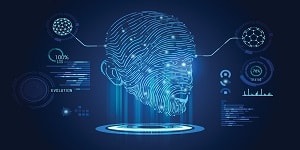
Artificial Intelligence 2019

Theme: A deep Dive into Emerging AI Techniques and Technologies
Artificial Intelligence 2019 is going to be conducted during September 18-19, 2019 at Singapore City, Singapore. Artificial Intelligence 2019 will focus on the theme “A Deep Dive into Emerging AI Techniques and Technologies”. Meetings International is a global leader in producing high quality conferences, meetings, workshops and symposia in all major fields of science, technology and medicine. Since its inception, Meetings International has been associated with national and international associations, corporations and high level individuals, dedicated to host world class conferences and events. Artificial Intelligence is a way of making a computer, a computer-controlled robot, or software think intelligently as humans think. Research associated with artificial intelligence is highly technical and specialized. The core problems of artificial intelligence include programming computers for certain traits such as knowledge, reasoning, problem solving, perception, learning, planning, ability to manipulate and move objects. The purpose of this conference is to promote research in the field of artificial intelligence & scientific exchange among AI researchers, practitioners, scientists, engineers in affiliated disciplines.
The key points of this conference are listed below:
- Artificial Neural Network and Virtual Intelligence
- Machine Learning and Decision Management
- Robotics and Intelligent System
- Big Data Analysis and Data Mining
- Cyber Defence and Cyber Security
- Natural Language Processing And Speech Recognition
- Biometrics and Image Processing
- Watson
- Drones
- Digital Twin/AI Modelling
- K Nearest Neighbour
- Support Vector Machine
Session-1: Artificial Neural Network and Virtual Intelligence
An Artificial Neural Network (ANN) is brain inspired systems which are anticipated to replicate the process by which we humans learn. ANN has established themselves as an excellent device for determining patterns which are considered to be highly complex and numerous to be handled by a human programmer. ANN process informations via dynamic responses of an external input. The key part of this perspective is the novel structure of the information planning system. ANNs are made out of different center points, which emulate natural neurons of human personality. The neurons are related by associations and they coordinate with each other. The centers can take the entered data and perform essential undertakings on the data. The outcome of these exercises is passed to various neurons. The yield at each center point is called its institution or center point regard.
Artificial Intelligence Meetings | Artificial Neural Network Symposia | Artificial Neural Network Workshops | Artificial Neural Network Congress
Session-2: Machine Learning and Decision Management
Machine learning teaches computers to do what comes naturally to humans and animals which they learn from experience. Machine learning algorithms use computational methods to gain information directly from data without relying on a predetermined equation as a model. As the number of samples available for learning increases, the performance of the machine increases. Machine learning algorithms find natural patterns in data that generate insight and help you make better decisions and predictions. They are used on daily basis to make difficult decisions in medical diagnosis, stock trading, energy load forecasting, and more.
Intelligent machines are capable of introducing rules and logic to AI systems so one can use them for initial setup/training, on-going maintenance, and tuning. Decision management has already been incorporated into a variety of corporate applications to assist and execute automated decision, making your business as profitable as possible.
Machine Learning Meetings | Machine Learning Symposia | Machine Learning Workshops | Machine Learning Congress
Session-3: Robotics and Intelligent System
A robot is a multitasking controller intended to move materials, devices or specific gadgets through programming to perform variety of tasks. A robot is a system that contains sensors, control frameworks, control supplies and programming all cooperating together to perform a task. Robots have supplanted humans in performing dreary assignments and perilous errands which people lean toward not to do or can't do. Robotic processes automation user scripts and methods that mimic and automate human tasks to support corporate processes. It is particularly useful for situations when hiring humans for a specific job or task is too expensive or inefficient.
Robotics Meetings | Robotics Symposia | Robotics Workshops | Robotics Congress | Smart Robotics Conference
Session-4: Big Data Analysis and Data Mining
Big data is a term used to refer to data sets that are too large or complex for traditional data-processing application software to adequately deal with. Data in many cases (rows) offer greater statistical power, while data with higher complexity (more attributes or columns) may lead to a higher false discovery rate. Big data challenges include capturing data, data storage, data analysis, search, sharing, transfer, visualization, querying, updating, information privacy and data source. Big data was originally associated with three key concepts: volume, variety, and velocity. Other concepts later attributed with big data are veracity (i.e., how much noise is in the data) and value.
Data Mining is a process commonly used for converting raw data into some useful information. It is also known as Knowledge Discovery in Data. Data Mining focuses on large data sets & database. Data Mining is widely used in business, science research, security, etc.
Data Mining Meetings | Data Mining Symposia | Data Mining Workshops | Data Mining Congress
Session-5: Cyber Defence and Cyber Security
Cyber defence is a computer network defence mechanism that focuses on preventing, detecting and providing timely responses to attacks or threats to infrastructure and information. The field is growing in importance due to increasing reliance on computer systems, the internet and wireless networks such as bluetooth and wi-fi, and due to the growth of "smart" devices, including smartphones, televisions and the various tiny devices that constitute the internet of things. Due to its complexity, both in terms of politics and technology, it is also one of the major challenges of the contemporary world.
Session-6: Natural Language Processing and Speech Recognition
Natural language generation is an AI sub-discipline that converts data into text, enabling computers to communicate ideas with perfect accuracy. It is used in customer service to generate reports and market summaries and is offered by companies like Attivio, Automated Insights, Cambridge Semantics, Digital Reasoning, Lucidworks, Narrative Science, SAS, and Yseop.
Every day, more and more systems are created that can transcribe human language, reaching hundreds of thousands through voice-response interactive systems and mobile apps.
Artificial Intelligence Meetings | Artificial Neural Network Symposia | Artificial Neural Network Workshops
Session-7: Biometric and Image Processing
Biometric technology can identify measure and analyse human behaviour and physical aspects of the body’s structure and form. It allows for more natural interactions between humans and machines, including interactions related to touch, image, speech and body language recognition, and is big within the market research field.
Image Processing is a method to perform any operation on an image, either to get an enhanced image or to find out any characteristic about an image. It is kind of signal processing. Here the input is an image and an output can be an image or any feature of an image. Image Processing is basically used for visualization, image retrieval, image enhancement, etc.
Image Processing Meetings | Image Processing Symposia | Image Processing Workshops | Image Processing Congress
Session-8: Watson
Watson created by IBM in 2010 as a question answering computing system. As a system, it is described as a heterogeneous ensemble of experts. The supercomputer IBM Watson consumes all the data & gives doctors the relevant information to a particular case, giving them access to better diagnostic information.
Artificial Intelligence Meetings | Artificial Neural Network Symposia | Artificial Neural Network Workshops | Artificial Neural Network Congress
Session-9: Drones
Drones, also known as unmanned aerial vehicles (UAVs) has no human pilot on-board, and is either controlled by a person on the ground or autonomously via a computer program. These stealth craft are becoming increasingly popular for war, military purposes, wildlife, atmospheric research to disaster relief and sports photography, archaeological sites, signs of illegal hunting and crop damage.
Artificial Intelligence Meetings | Artificial Neural Network Symposia | Artificial Neural Network Workshops
Session-10: Digital Twin/AI Modelling
A digital twin is a software construct that bridges the gap between physical systems and the digital world. General Electric (GE), for example, is building an AI workforce to monitor its aircraft engines, locomotives and gas turbines and predict failures with cloud-hosted software models of GE’s machines. Their digital twins are mainly lines of software code, but the most elaborate versions look like 3-D computer-aided design drawings full of interactive charts, diagrams, and data points. Companies using digital twin and AI modelling technologies include VEERUM, in the capital project delivery space; Akselos, which is using it to protect critical infrastructure, and Supply Dynamics, which has developed a SaaS solution to manage raw material sourcing in complex, highly distributed manufacturing environments.
Session-11: K Nearest Neighbor
KNN is a kind of case based learning, or emotionless perceiving, where the most remote point is approximated locally and all count is surrendered until delineation. K-Nearest Neighbors is a champion among the most central and essential portrayal figuring's in machine learning. It has a place with the controlled learning space and discovers striking application in plot confirmation, data mining and impedance locale. It is broadly pointless, in fact, conditions since it is non-parametric (it doesn't make any secured assumptions about the course of data). KNN has for the most part high exactness. It is flexible in nature i.e. it is useful for classification or regression.
Artificial Intelligence Meetings | Artificial Neural Network Symposia | Artificial Neural Network Workshops |Artificial Neural Network Congress
Session-12: Support Vector Machine
Support Vector Machine (SVM) is a classifier technique that performs arrangement of tasks by building hyper planes that isolates instances of various class names. SVM supports regression as well as classification of tasks which can handle different types of variables. Support Vector Machines are based on the concept of decision planes that define decision boundaries.
Support Vector Meetings | Support Vector Symposia | Support Vector Workshops | Support Vector Congress
Asia Region:
Artificial Intelligence (AI) drives value based on business outcomes around customer experience, cost reduction and revenue generation. Successful CIOs understand that AI applications are more than technical and tactical projects — and that the application of AI as a technological capability can enable new opportunities and help achieve business goals. China’s three-point plan for achieving domination of the projected $150 billion global artificial intelligence (AI) market shows a long-term vision to embrace opportunities created by new technologies. In other tech-savvy Asian economies, strong private-sector investments in AI development and adoption are propelling the technology forward. In Japan, where government investment in AI is less than 20% of China’s, the private sector’s annual AI investment of nearly ¥600 billion (US$5.4 billion) dwarfs and complements the government’s FY18 ¥77.04 billion ($720 million) AI budget allocation. Malaysia, which was Ali Baba’s first foreign foray for implementation of its AI Smart City platform, and which now boasts the first Ali Baba office in Southeast Asia, is incorporating AI in its automotive, banking, and education sectors at such speed that global consulting firm McKinsey has noted the country’s “promising early signs” for the sector. Government investments in R&D and education, complemented by private-sector and other stakeholder buy-in is certain to produce results, both in the short term and in the long term where it matters most. As other nations struggle to save the industries of the past, Asian economies are focusing on the industries of the future. Policymakers in other regions would be wise to take note or risk falling behind. It is already happening.

- Artificial Neural Network and Virtual Intelligence
- Machine Learning and Decision Management
- Robotics and Intelligent System
- Big Data Analysis and Data Mining
- Cyber Defence and Cyber Security
- Natural Language Processing And Speech Recognition
- Biometric and Image Processing
- Watson
- Drones
- Digital Twin/AI Modelling
- K Nearest Neighbor
- Support Vector Machine
- Computer Engineering & Information Technology
- Journal of Applied Bioinformatics & Computational Biology
4 Organizing Committee Members
8 Renowned Speakers
Susan Diamond
Engineering Manager, IBM Watson
USA
Roman L Tankelevich
Professor, California State University Long Beach
USA
Joanna Slawinska
Professor, University of Wisconsin
USA
Ogwueleka Francisca Nonyelum
Professor, Nigerian Defence Academy
Nigeria
Ivana Haluskova Balter
Professor, French Society of Immunology
France
Dennis Anderson
Chairman, St. Francis College
USA
Hyeong Cheol Moon
Ph. D, Chungbuk National University
South Korea
Bill Jensen
CEO, The Jensen Group
USA

































































































































